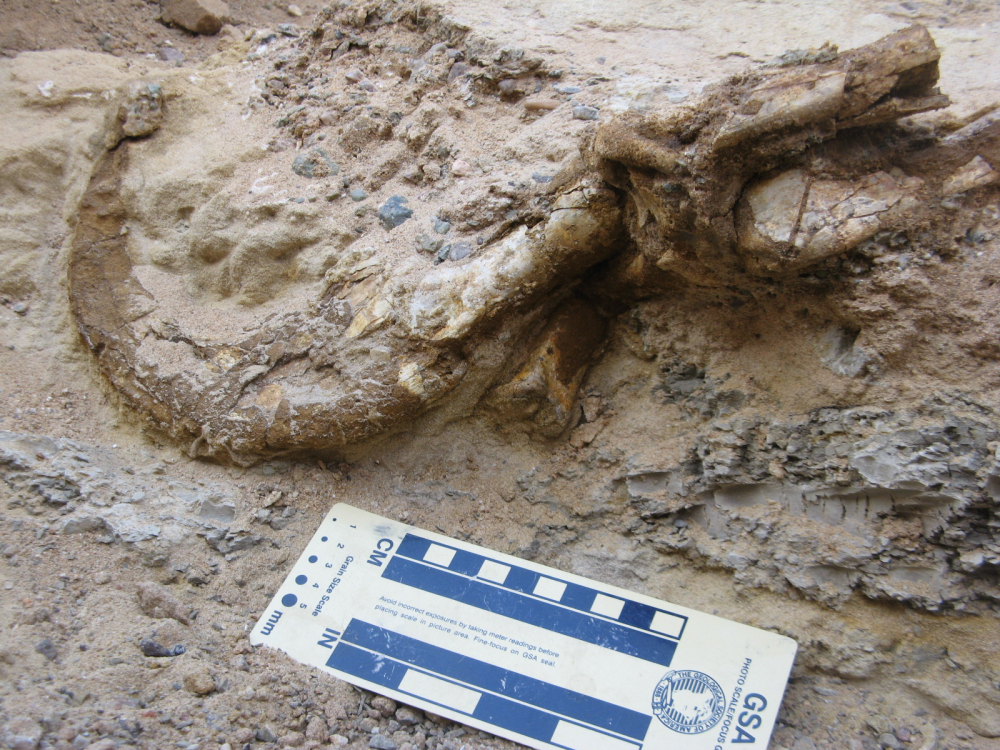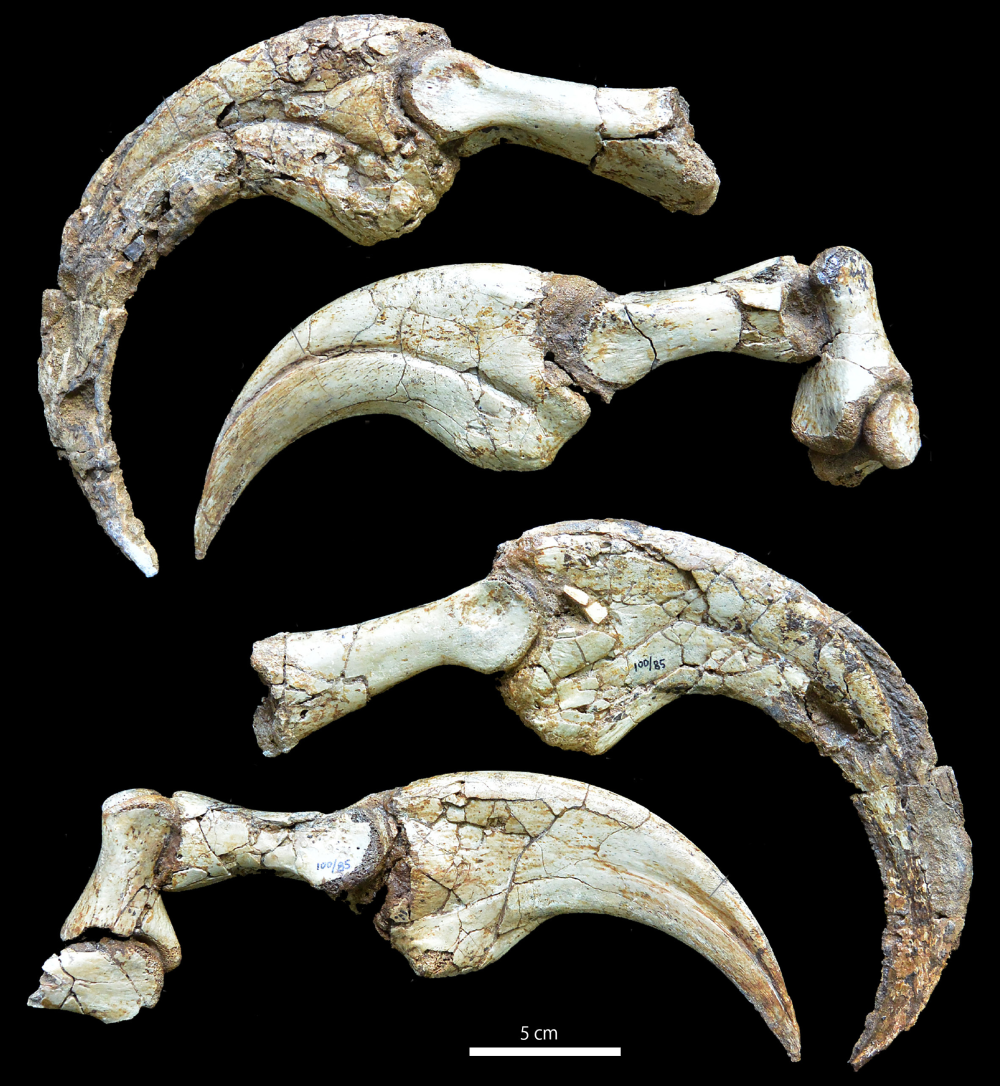A new species of therizinosaur has been discovered in Mongolia, dating back to around 90 million years ago. Named Duonychus tsogtbaatari, it’s thrown something of a curve ball for palaeontologists, as unlike all other therizinosaurs found to dates, this prehistoric giant had just two fingers instead of three.
ADVERTISEMENT
In 2012, workers building a pipeline in Mongolia stumbled upon what appeared to be an enormous claw. It was recovered from the lower upper Cretaceous Bayanshiree Formation (dating to 95.9 to 89.6 million years old) of the Gobi Desert by the Mongolian Institute of Paleontology, and when it reached Dr Yoshitsugu Kobayashi of Hokkaido University a year later, it caused more than a few raised eyebrows.
This was the real thing—an actual claw from when the dinosaur was alive. It was just moment after moment of shock and amazement!
Dr Yoshitsugu Kobayashi
“I was completely blown away,” Kobayashi told IFLScience. “As soon as I looked at it on the table, I knew right away it was a therizinosaur hand, but then I realized… there were only two fingers. I kept looking again and again, thinking, ‘Wait, where’s the third one?’ I just couldn’t believe what I was seeing.”
“To make it even crazier, one of the claws still had the keratin sheath preserved! When we paleontologists talk about “claws,” we’re usually referring to the bone inside, not the actual outer covering like our fingernails. But this was the real thing—an actual claw from when the dinosaur was alive. It was just moment after moment of shock and amazement!”

The enormous Therizinosaur claw during excavation.
Image credit: Yoshi Kobayashi Hokkaido University
The remarkable fossil is incredibly rare in being so well preserved, as typically the keratinous fingernail rots away before fossilization kicks in. Now, we have a unique opportunity to study the structure of the claw, and blow a few scientists’ minds along the way.
I thought… Wow, this is one big, sharp, nasty claw.
Prof Darla Zelenitsky
“I had to give my head a shake. I had never seen a dinosaur claw that was so complete,” study author Professor Darla Zelenitsky at the University of Calgary told IFLScience. Zelenitsky worked on the study alongside Kobayashi, Anthony Fiorillo of the New Mexico Museum of Natural History and Science, and Chinzorig Tsogtbaatar from North Carolina State University.
“The spectacular preservation shows us the true size and shape of the claw,” she added. “I thought… wow, this is one big, sharp, nasty claw.”
You might think such enormous claws would make them primed for combat, but these dinosaurs were more like sentient salad scoops, and the same was probably true of this new two-fingered species.

Behold, Duonychus’s famous two fingers, viewed from either side.
Image credit: Kobayashi et al 2025
“Many therizinosaur species used their claws to grasp and pull plants towards them during feeding,” explained Zelenitsky. “Despite having only two fingers, this animal was still an effective grasper from the nature of the hand and the size and shape of the claws. The uniqueness of the hand, however, indicates Duonychus was likely doing something different from other therizinosaurs. Perhaps Duonychus evolved as more of a specialist and fed on particular plants. I can only guess.”
ADVERTISEMENT
While we don’t know exactly why Duonychus evolved to have two fingers instead of three, further fossils found at the site tell us that this was more than just a random evolutionary quirk. As Kobayashi said, once the team started to study the joints in the elbow, wrist, and fingers, it all started to make sense.
“The elbow and wrist were incredibly stiff, which meant Duonychus wasn’t using its arms the way other theropods did,” Kobayashi explained. “And then there was the keratinous claw sheath — that was the real game-changer. It helped us figure out that this dinosaur was probably using its hands to pull down branches to feed. So, the reduced flexibility, and even the missing third finger, weren’t disadvantages — they were adaptations.”
It’s like getting a rare glimpse of behavior from 90 million years ago. That’s pretty mind-blowing.
Dr Yoshitsugu Kobayashi
A missing finger might not instantly garner the reaction it deserves when you retell this story at the pub, but it’s rare to capture direct evidence of how extinct animals lived in the fossil record. Having fossils as remarkable as these therefore makes a great jumping off point to work backwards, and figure out what was happening when dinosaurs still roamed the Earth.
“It opens up a whole new window into how these animals actually used their hands in life,” said Kobayashi. “It’s like getting a rare glimpse of behavior from 90 million years ago. That’s pretty mind-blowing.”
The study is published in iScience.
Source Link: New Species Of 90-Million-Year-Old Therizinosaur Shocks Scientists With “Unusual” Trait Never Seen Before